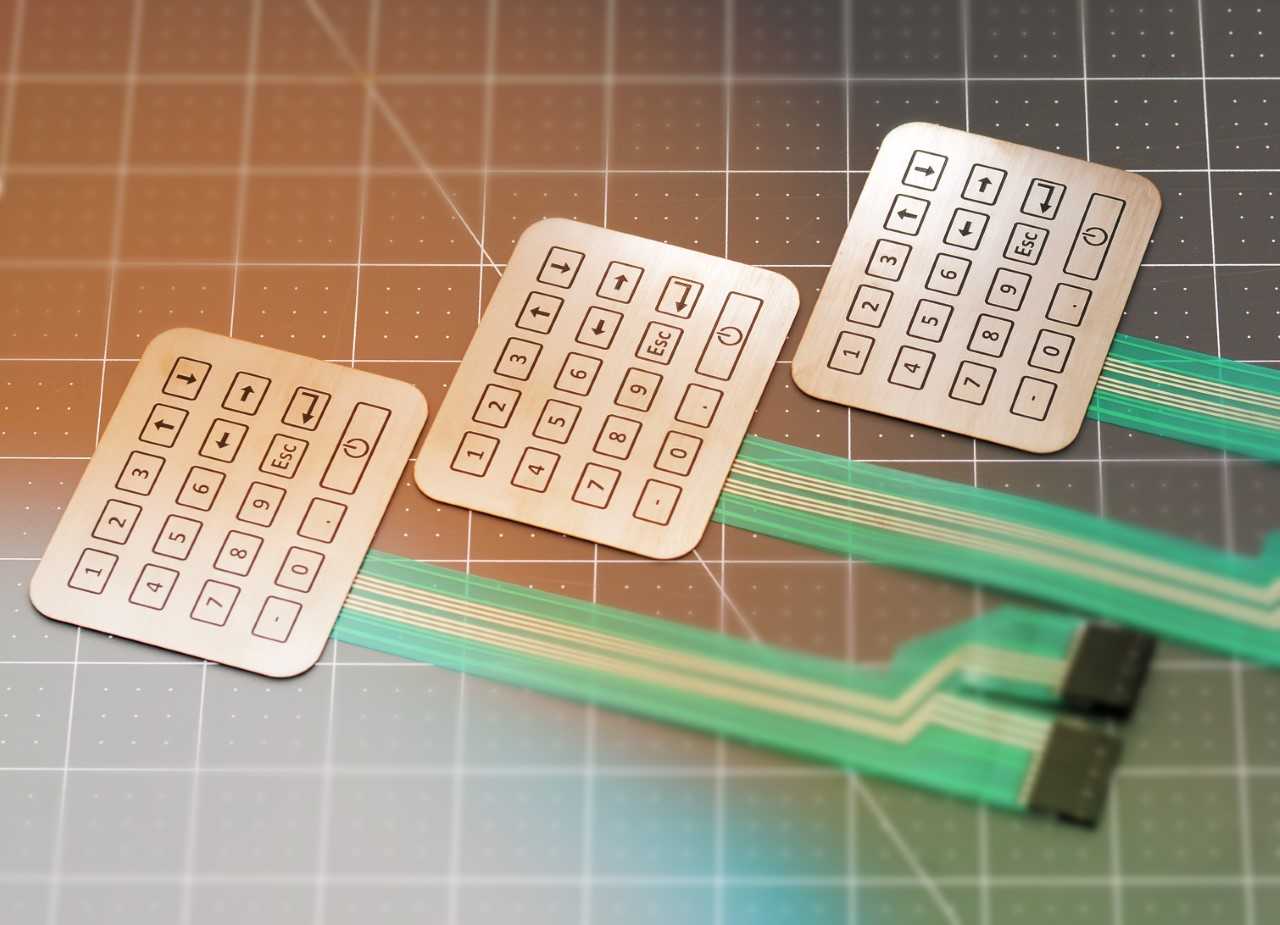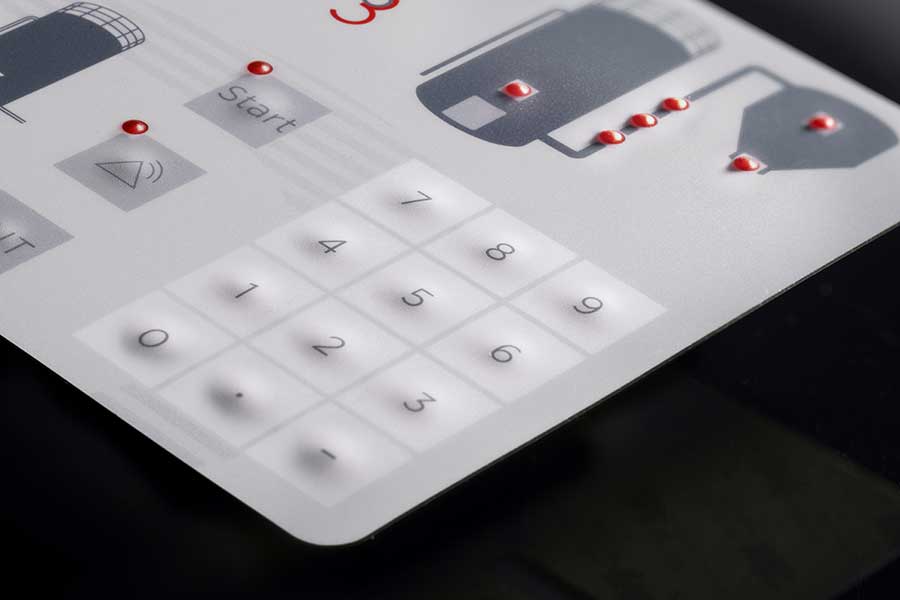A good membrane switch manufacturer offers flexible design options for advanced applications.
A good membrane switch manufacturer offers flexible design options for advanced applications.
Blog Article
Everything About Membrane Switch: Comprehending Its Design and Capability
When you assume regarding the control interfaces in contemporary gadgets, membrane layer buttons often come to mind. Let's discover what collections membrane switches apart from various other control systems.
What Are Membrane Buttons?

Their smooth nature makes them very easy to tidy and resistant to dust and wetness, a crucial function in numerous environments. Membrane layer switches can additionally be tailored relating to shape, size, and graphics, enabling producers to produce unique user interfaces tailored to specific items. Plus, they're light-weight and thin, which aids in minimizing the total mass of gadgets. In general, membrane layer switches play a significant function in boosting individual experience across a large selection of applications.
Just How Membrane Layer Switches Job
When you press a trick on a membrane switch, it turns on a straightforward yet effective system. membrane switch manufacturer. The top layer, commonly made of adaptable material, pushes down onto a conductive layer beneath it.
You'll notice that the tactile feedback varies based on the button layout, supplying either a soft click or a more obvious feedback. When you release the key, the membrane layer go back to its initial position, reopening the circuit and stopping the signal. This process happens nearly instantaneously, guaranteeing a receptive customer experience.
Membrane switches are popular due to their longevity and resistance to dirt and dampness, making them ideal for different applications, from household appliances to clinical tools. Comprehending this procedure helps you value their prevalent use.
Trick Components of Membrane Switches
Recognizing the essential components of membrane layer switches is basic for understanding their performance and layout. The protective layer guards versus ecological elements and put on, extending the switch's life-span. By understanding these parts, you'll get insight right into how membrane switches over operate and their importance in different applications.
Materials Utilized in Membrane Switch Over Style
The efficiency and sturdiness of membrane changes heavily rely on the materials used in their style. You commonly encounter polyester and polycarbonate as key substratums due to their outstanding toughness and versatility. These materials withstand scrapes and chemicals, making them excellent for requiring settings.
The conductive layers frequently utilize silver or carbon, selected for their integrity and conductivity. membrane switch manufacturer. Silver provides exceptional efficiency, while carbon is a cost-efficient choice. For the overlay, you could take into consideration a matte or shiny coating, depending on your visual demands and customer experience
Adhesives play a vital duty too; they bond layers securely and ensure long life. Make certain to choose adhesives that hold up against ecological factors like temperature level and moisture. Lastly, do not forget the importance of a good printing technique for graphics, as it enhances both capability and visual appeal. Choosing the appropriate products will guarantee your membrane button stands the examination of time.
Layout Factors To Consider for Membrane Buttons
While designing membrane layer buttons, it's crucial to take right into account different factors that affect their performance and individual experience. Start by concentrating on the format and button size; make certain they're instinctive and very easy to navigate. Take into consideration the responsive comments you intend to provide-- will customers need a noticeable click or a softer touch? Additionally, think of the materials you'll use, as they'll influence longevity and aesthetics.
Validate your design accommodates ecological variables, like moisture or temperature variations, which might impact efficiency. By very carefully thinking about these elements, you'll produce a membrane button that enhances use and complete satisfaction.
Applications of Membrane Switches
Membrane layer buttons are functional elements located in different applications, from industrial tools to customer electronics. You'll see their influence in makers that call for long lasting interfaces and in devices that take advantage of smooth styles. Recognizing these applications assists you value the performance and practicality of membrane layer buttons in day-to-day modern technology.
Industrial Equipment Use
When you're looking to enhance the capability of commercial equipment, membrane layer buttons use a dependable service that incorporates durability with straightforward layout. These buttons are excellent for extreme environments, giving resistance to dirt, wetness, and chemicals. Embrace membrane layer buttons to enhance your procedures and enhance overall performance.
Consumer Electronics Combination
In the domain name of customer electronics, membrane buttons play an essential duty in boosting individual communication and tool performance. Membrane layer switches likewise ensure resilience and resistance to dust and dampness, extending the life expectancy of your electronics. By picking membrane buttons, you boost not simply the functionality but also the design of your devices, making everyday interactions smooth and delightful.
Benefits and Disadvantages of Membrane Layer Switches
While membrane switches supply a series of benefits, they likewise feature some downsides that you must consider. One substantial benefit is their small layout, making them suitable for space-constrained applications. They're also cost-effective, providing a resilient solution with a reduced production price. On top of that, their smooth surface area is simple to clean, boosting hygiene in atmospheres like healthcare facilities.

Membrane layer switches can have a shorter lifespan compared to mechanical switches, particularly under hefty usage. They can likewise be less responsive, which might influence individual responses throughout procedure. Stabilizing these pros and cons will help you determine if membrane buttons are the best fit for your job.
Frequently Asked Inquiries
Exactly How Long Do Membrane Layer Switches Over Normally Last?
Membrane switches generally last in between 5 to 10 years, depending upon usage and environmental problems. You'll intend to examine elements like wear, exposure to dampness, and temperature level changes to assess their longevity properly.
Can Membrane Changes Be Personalized for Particular Styles?
Yes, you can tailor membrane switches to fit specific designs (membrane switch manufacturer). You'll have the liberty to choose shades, shapes, and designs that match your project's requirements, ensuring they mix effortlessly with your general aesthetic
What Is the Price Range for Membrane Layer Change Production?
The price array for membrane layer button production usually falls between $1 and check my reference $10 each, depending on elements like style complexity, amount, and materials. You can get quotes from producers to discover the very best option.

Are Membrane Switches Water Resistant or Resistant?
Membrane layer buttons can be designed to be water resistant or immune, relying on products made use of and construction techniques. If you need them for damp atmospheres, assure you specify those demands throughout the design procedure.
How Do Membrane Switches Compare to Conventional Buttons?
Membrane layer buttons are generally thinner and much more versatile than standard buttons, offering a sleek layout. They're often much easier to clean and integrate, yet might not offer the tactile comments you're used to with mechanical choices.
Verdict

Report this page